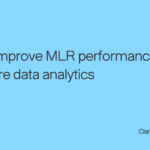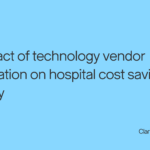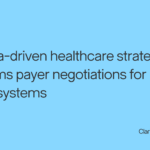For healthcare providers, patient retention is crucial for both growth and profitability. High patient attrition can result in substantial financial losses and increased operational costs, as providers must continually invest in acquiring new patients rather than focusing on existing ones. Additionally, lost opportunities for follow-up care can lead to poorer health outcomes and diminished patient satisfaction. To address these challenges, predictive analytics in healthcare offers a transformative approach. Predictive analytics involves using data, statistical models, and machine learning to forecast patient outcomes and trends. By harnessing advanced data analysis, providers can uncover patterns and risk factors associated with patient attrition, allowing them to implement proactive strategies to retain patients. Predictive analytics can also optimize resource allocation, ensuring that staffing, equipment, and scheduling are aligned with patient demand to enhance overall care. Furthermore, by personalizing engagement strategies through data-driven insights, providers can tailor communication and care plans to individual needs, boosting patient satisfaction and loyalty. Predictive models enable the identification of high-risk patients, allowing for early interventions that support retention and improve outcomes. Additionally, analyzing patient feedback and sentiment can reveal the key drivers of satisfaction, guiding targeted improvements. Investing in predictive analytics not only enhances patient retention but also provides a clear understanding of the return on investment. By demonstrating how predictive analytics can lead to increased revenue and improved patient loyalty, providers can justify the expense and reap the long-term benefits. Through these strategies, healthcare providers can effectively address retention challenges, leading to enhanced patient experiences, sustained growth, and greater profitability. It’s common for providers to experience high attrition rates when patients choose other providers or fail to return for follow-up care. In addition to this, health system “leakage,” where patients leave the entire health system for care elsewhere, can significantly impact both patient outcomes and the growth of the healthcare organization. One survey found that more than a third of patients had left a healthcare provider in the previous two years, highlighting the financial and operational challenges posed by both patient attrition and leakage. Predictive healthcare analytics uses historical patient data to find patterns and identify specific factors affecting whether patients will return for care. These might include long wait times for appointments or for providers who are running late. Or they may not have received return calls or test results quickly enough. Providers can use these insights to make changes that increase operational and clinical efficiency. As patients shift to a more consumer-based mindset about healthcare, a positive patient experience is becoming a key factor in retention. In fact, of those patients in the survey mentioned earlier who chose not to return to a provider, eight out of ten did so because of a poor in-person experience. Many delays result from inconsistent patient flow and scheduling, which can make it difficult to allocate clinical and administrative resources efficiently. Predictive analytics in healthcare can use internal and external data to forecast patient volume and demand. For example, data might show a trend of more appointments near the end of the year as people want to use up their insurance benefits. Providers can use these insights to optimize scheduling for staff, exam rooms, equipment, and hospital beds. Another frequent issue is a lack of personalization in patient care and interaction. Seven in ten healthcare consumers say they want their providers to be more engaged in their care. Generic communications and a lack of awareness of their unique concerns and medical histories can cause patients to look elsewhere. While clinicians’ time with patients is often constrained, predictive healthcare analytics can do much of the work of keeping them informed. Platforms can segment patients according to their communication and treatment preferences, stated concerns, health risks, and other factors. Providers can use these categories to create tailored content, communications schedules, and care plans that reflect and meet their unique needs. Providers may be particularly concerned about the attrition rates of patients with serious or chronic conditions that require ongoing treatment or medication. Patients in this category who do not return for follow-ups, renew their prescriptions, or stop making regular appointments are at risk of deteriorating health and other complications. Several factors that may contribute to this include high cost of care, lack of insurance coverage, transportation barriers, limited access to specialists, or scheduling difficulties. When these patients disengage from regular care, it can lead to worsening health conditions and ultimately increase costs when they require more intensive or emergency treatment. By analyzing data related to clinical treatment and outcomes, lifestyle factors, and social determinants of health, healthcare predictive analytics platforms can accurately identify patients at risk of poor outcomes. Providers can then plan and deliver interventions like emails and texts reminding patients to make their next appointment and sharing information on the benefits of ongoing treatment. They can even loop in family members or caregivers to help patients keep up with check-ups, treatments, and medications. Often, providers don’t have a good idea of what causes patient dissatisfaction and attrition. They may have trouble consolidating diverse sources of feedback or zeroing in on the main problems. This makes it harder to take corrective action. Healthcare predictive analytics can ingest internal data such as survey results and direct patient feedback as well as external data like reviews on third-party sites and social media posts, then sift through it to pinpoint major causes for complaints and key drivers of satisfaction. Providers then have concrete, data-driven information to act on, which can motivate staff to implement patient retention efforts and offer a strong argument for allocating resources toward them. Even knowing these benefits, providers may be reluctant to invest in the cost of predictive healthcare analytics platforms if they can’t see a significant financial return on their investment. However, the technology can illustrate its value by using models to forecast the financial outcomes of various patient retention tactics. By increasing patient visits, providers not only have more opportunities to manage care proactively but also to control overall costs by identifying issues early, adjusting treatments, and preventing expensive complications. Additionally, regular interactions increase the likelihood that patients will seek additional services, remain engaged in long-term care, and generate ongoing referrals, all contributing to a stronger financial outcome. Patient retention is a significant driver of providers’ financial success. However, knowing what factors maintain and increase patient satisfaction and loyalty can be unclear when information is spread across multiple databases and spreadsheets. Predictive analytics in healthcare provides meaningful insights from diverse data that providers can act on to improve retention rates. Platforms can even quantify these changes and show the financial impact of different efforts on provider revenue and savings. Even knowing these benefits, providers may be reluctant to invest in the cost of predictive healthcare analytics platforms if they can’t see a significant financial return on their investment. However, the technology can illustrate its value by using models to forecast the financial outcomes of various patient retention tactics. Healthcare is not a one-size-fits-all model, and predictive analytics helps account for that nuance by tailoring care to individual patient needs. By increasing patient visits, providers not only have more opportunities to manage care proactively but also to control overall costs by identifying issues early, adjusting treatments, and preventing expensive complications. This personalized approach makes care more relevant, targeted, and effective. Additionally, regular interactions increase the likelihood that patients will seek additional services, remain engaged in long-term care, and generate ongoing referrals, all contributing to a stronger financial outcome. Predictive analytics and high patient attrition rates
Personalization and patient retention
The challenges of retaining high-risk patients
Making patient satisfaction and retention clearer
More satisfied patients equal more successful providers
- Author Details





